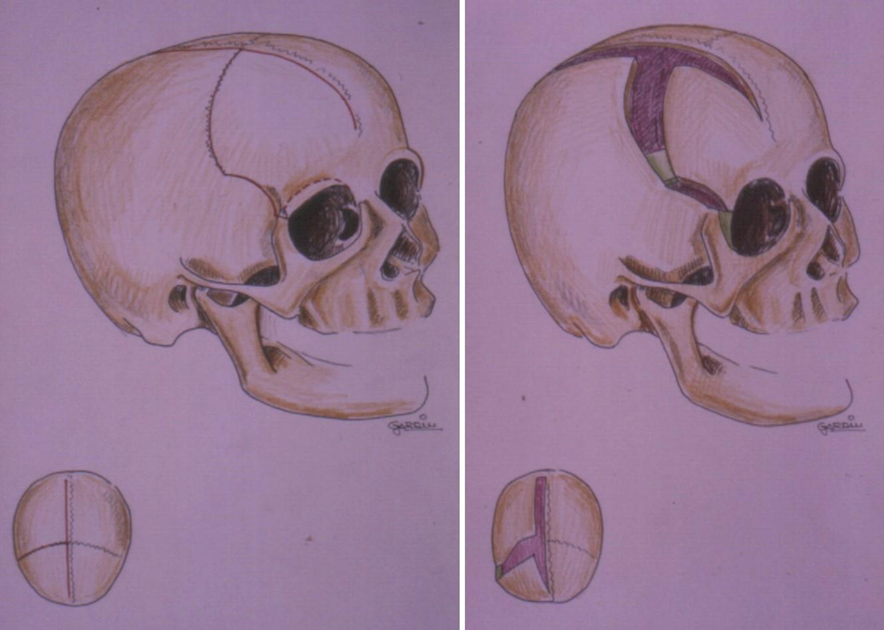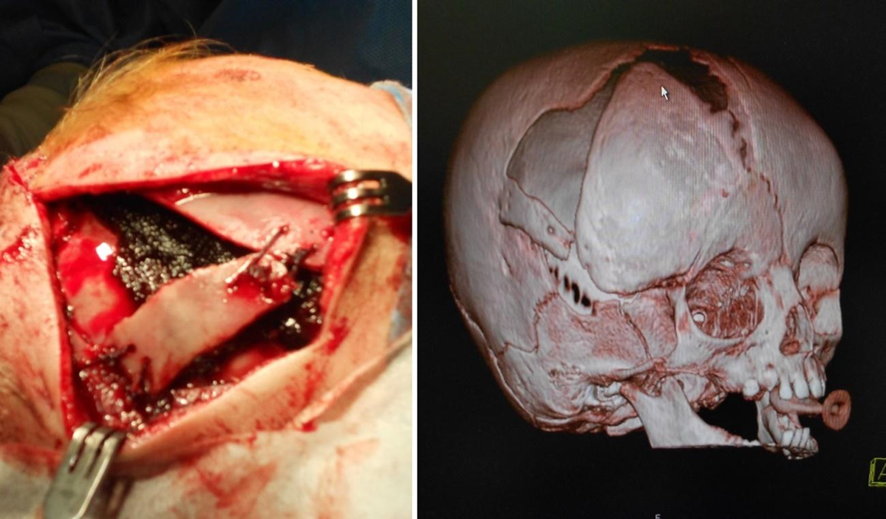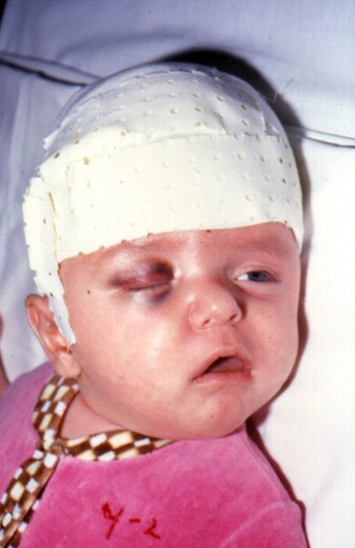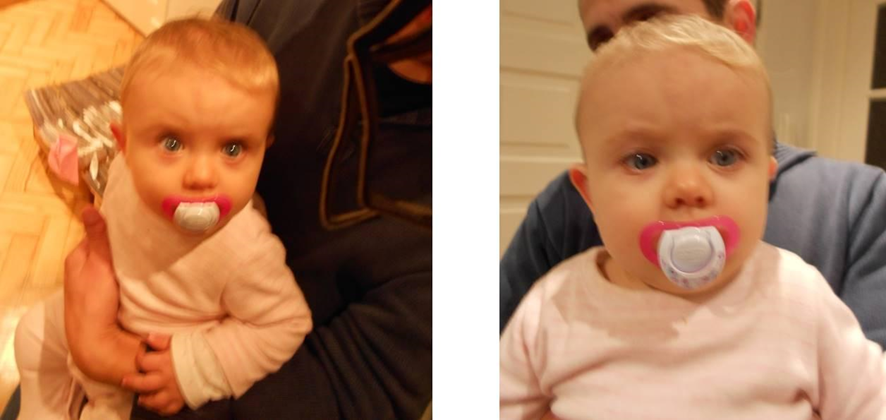António Gentil Martins1*
1Department of Pediatric Surgery, Children’s Hospital de D. Estefania (Hospital of Lisbon´s Central Hospitals), Lisbon, Portugal and Department of Paediatric and Adolescents Oncology-Portuguese Cancer Institute of Francisco Gentil Lisboa, Portugal
*Corresponding Author: António Gentil Martins, MD, FICS, OLY, Department of Pediatric Surgery, Children’s Hospital de D. Estefania (Hospital of Lisbon´s Central Hospitals), Lisbon, Portugal and Department of Paediatric and Adolescents Oncology-Portuguese Cancer Institute of Francisco Gentil Lisboa, Portugal; Email: [email protected]
Published Date: 30-04-2022
Copyright© 2022 by Martins AG. All rights reserved. This is an open access article distributed under the terms of the Creative Commons Attribution License, which permits unrestricted use, distribution, and reproduction in any medium, provided the original author and source are credited.
Abstract
Real Plagiocephaly is a rare form of craniosynostosis, resulting from the premature fusion of the coronal suture on one side, leading to a deformed head and to an apparently exteriorized homolateral eye. We present a simple and straightforward technique, based on removal of the involved suture, with the surgical incision prolonged to the orbital roof till near the ethmoide. After having sectioned the lateral border of the orbit at the junction of the zygomatic and frontal bones, a paramedian incision is made on the frontal bone, from the anterior fontanel (always carefully preserved), till the glabella. Then follows simple osteoclasia of the frontal bone and placement of a bone graft obtained from the adjacent parietal bone and that will maintain the forward projection of the frontal bone (but in slight hypercorrection). The grafts are simply fixed with silk sutures, placed through perforating holes in the bones, no metal being used. The transverse surgical wound, going almost from ear to ear, is closed in the usual way.
Keywords
Craneo-Facial Morphology; Craniosynostosis; Coronal Suture; Unicoronal Craniosynostosis (Plagiocephaly)
Introduction and Objectives
Plagiocephaly is an asymmetric form of craniosynostosis resulting from the premature fusion of one of the fronto-parietal cranial sutures (coronal sutures), which is associated with a more or less severe cranio-facial deformity, leading to a reduction in homo-lateral orbital capacity thus projecting anteriorly the ocular globe, simulating a true exophthalmia [1-6]. The degree of cranial hypertension is usually negligible due to the fact that the contralateral side tends to diminish the deformity which, nevertheless, may constitute a significant aesthetic problem [3,7-10]. After corrective surgery the head reassumes its normal contour.
Material and Methods
We describe a personal technique for the treatment of plagiocephaly, which we believe to be much simpler and less traumatic than most of the usually employed techniques but still assuring an excellent functional and aesthetic result [11,12]. Operation should be performed early (preferably after between 3 months of age) and has the advantage of being only a “one stage” operation.
Surgical Technique
Under endotracheal anesthesia a large transverse scalp incision (predominant in the involved side) is placed at the level of the anterior fontanelle, almost going from ear to ear [5-7].
Fig. 1 shows the two flaps (anterior and posterior), are freed to expose the periosteum. It is important to leave the periosteum intact when the skin flaps are reflected and until the bone is removed. Having performed the flaps, then follows the total excision of the corresponding coronal suture, the incision being prolonged to the orbital roof at the level of the spheno-zigomatic and fronto-zigomatic areas (thus sectioning the external contour of the orbit at the level of the junction between the frontal and zygomatic bones) and then along the orbital roof itself, till attaining the etmoide (but always taking care to preserve the orbital periosteum in order to avoid the superior prolapse of the orbital content).
Fig. 2 having sectioned the lateral border of the orbit, a paramedian incision is made on the frontal bone, from the anterior fontanel (always carefully preserved), till the glabella.
At this stage, the frontal bone on the side of the malformation, being largely freed, is broken by osteoclasia and pushed forward with slight hypercorrection (having maintained its medial fixation through the osteoclasia performed). Then follows the bone stabilization at that level, by placing a small rectangular bone graft (obtained from the anterior inner portion of the corresponding parietal bone on that side), in the space obtained between the parietal bone and the mobilized frontal bone. Another small graft (also obtained from the inner portion of the parietal bone) is placed at the external contour of the orbit to reconstruct it. The grafts are held in place just by silk or absorbable sutures (after simply perforating holes in the bones), so no metal is used for graft’s fixation.
Fig. 3 there is no bone interposition of any material, namely polyethylene film (to inhibit regrowth of the bone), an old fashioned technique fortunately abandoned.
Operation lasts between 2 and 3 hours (including endotracheal anesthesia). Antibiotic coverage is used for 48 hours and usual hospital stay is about one week or even less.

Figure 1: Already fused right coronal suture, showing the marked orbital deformity (that leads to the external projection of the eye). Before (left) and after correction (right).

Figure 2: Scheme of the bone incision, mobilization of the right frontal bone and placement of the grafts.

Figure 3: Grafts in place and already stabilized, with the frontal bone projected anteriorly in slight hypercorrection.
Discussion
Plagiocephaly is an oblique or slanted skull due to premature fusion of the coronal suture on one side alone. Craniosynostosis, first described by Wirschow in 1851, presents an incidence of 1 in 2000-3000 births, being more frequent in boys than in girls, the coronal involvement being its less frequent modality (about 3%). No specific gene mutations have been identified and, so far, the etiology and pathogenesis are still obscure. Many have mistakenly confused what may be simply postural and attributed to bad positioning already in utero or late (after birth) and not requiring surgery, with a deformational posterior lambdoid unilateral synostoses, the patient showing contralateral occipito-parietal flattening, ipsilateral occipital bossing and contralateral frontal bossing [1,6,7]. Distinction is particularly important due to the differences in the treatment plan and clinical management. There is a great variation in the position of the ear and external auditory meatus both in postural or true plagiocephaly, so that is not reliable for distinction between both [2]. Only radiology will clarify the situation. Before deciding the treatment required one must perform a careful physical, ophthalmologic, neurological and radiological examination. A MRI has been advised by some but CT is usually used to detect the synostoses, even if some accuse it to potentiate eventual ill effects of ionizing radiation in a very young child, what we do not believe to be relevant. The main aim is to verify the presence of synostoses at the coronal suture.
Studies suggest that there is a large degree of independence in the developmental trajectories of the brain and skull. Delayed surgical treatment can lead to progressive deformity of the cranial base and deformed craniofacial growth. In the skull, new bone growth occurs at the sutures, induced by expansion of the brain, the cranial vault being constituted by membranous bones. The capacity for craniofacial remodelling is better in younger children, optimal aesthetic results decreasing as the child ages, namely after the first year of life and it is well known that in the first year of life the bone regrows quickly in infants with craniosynostosis, a decisive help for the surgeon, as solid bone is generally present 6 months after surgery.
Amongst the various cranial sutures, the coronal suture itself is unique in its development, bony union across the suture appearing to be the result of a simple closure rather than fusion, as it is seen in other craniosynostosis.
Self-imaging tends to begin approximately by 4 years of age. So surgical correction of all types of deformities, like craniosynostosis, should have been already completely corrected before that age, as to minimize eventual psychological trauma from the anomaly. So far there is no evidence that plagiocephaly or even craniosynostosis in general is accompanied by mental retardation, if one excludes some more severe forms, usually in syndromic patients.
The aim of early surgical correction in craniosynostosis is based on the principle of intercepting the synostoses as early as possible, so as to avoid the compensatory deformities and mainly to avoid intracranial hypertension, relevant in severe craniosynostosis but in fact not relevant in Plagiocephaly, which is mainly an aesthetic problem. For its correction some have advocated bone fixation with titanium plates and screws, then replaced by resorbable fixation systems. Others have advised the use of springs applied to the calvaria to obtain assisted vault expansion (what also requires a second intervention to remove the springs) [8,9]. Many techniques have been used so far [1,10,11].
With the one stage technique we suggest, in the pos-operative period we can observe a progressive remodelling of the cranial contour and of the fronto-parietal bone on that side, the orbital cavity acquiring a normal depth (thus “protecting” the ocular globe). The contralateral frontal bone, initially projected anteriorly, tends to reassume its normal position, growth finally leading to a normal cranial contour. The main advantage of this technique is its simplicity, but above all to allow for maintaining, through a simple osteoclasia, the natural relationship between the right and left frontal bone halves (Fig. 4,5).
To minimize intraoperative blood loss, when performing the initial scalp incisions, scalp clips are promptly applied. Bleeding from the exposed bone is controlled both with bipolar coagulation and hemostatic agents. Nevertheless, as in all operations for any form of craniosynostosis, blood transfusions must be available, if required. (Namely, if the hematocrit reduces 20%). Hematocrit is checked immediately after operation and also on the next day after surgery.

Figure 4: Immediate postoperative appearance, showing moderate hematoma that subsides in a few days (the Parents having been alerted before surgery).

Figure 5: Facial appearance, with noticeable frontal and orbital deformity, with external “Projection of the eye (left), and final result with a perfectly normal appearance (right)”.
Conclusion
This one stage technique is relatively simple and rapid to perform, avoiding the more traumatic, aggressive and lengthy mobilization of all the frontal bone and allows for a safe and excellent aesthetic and functional result. Open surgery, namely with the method we propose, should remain the standard treatment for Unicoronal Craniosynostosis, having a low rate of intraoperative or postoperative complications and also allowing excellent cosmetic results.
Conflict of Interest
The authors declare that they have no conflict of interests.
References
- Anderson H Gomez SP. Craniosynostosis review of the literature and indications for surgery. Acta Pediatric Scand. 1968;47-54.
- Fradieh RD, Bulstrod NW, Cugno S. Plastic and reconstructive surgery: approaches and techniques. John Wiley & Sons Ltd. 2015.
- Kenneth Till. Abnormal skull shape craniosynostosis. Pediatric Neurosurgery Blackwell Scientific Publications. 2015:158.
- Hutson JM, O’Brien M, Beasley SW, Teague WJ, King SK. Jones’ clinical paediatric surgery. John Wiley & Sons; 2015.
- Harrison DH. Plastic and reconstructive surgery: approaches and techniques. J Plastic, Reconstructive & Aesthetic Surg. 2015;68(12):1777.
- Hoffman HJ , Hendrik EB, Munro IR. Pediatric Neurosurgery- American Society of Pediatric Neurosurgery (Section of the American Association of Pediatric Surgeons-Saunders 4th Edition 2001. Pediatric Neurosurgery Development Anomalies.
- Jeong WS, Altun E, Choi JW, Rah YS. Comparison of endocranial morphology according to age in one-piece fronto-orbital advancement using a distraction in craniosynostotic plagiocephaly. J Cranio-Maxillofacial Surg. 2017;45(9):1394-8.
- Lauritzen C, Sugawara Y, Kocabalkan O, Olson R. Spring mediated dynamic craniofacial reshaping: a case report. Scandinavian J Plastic Reconst Surg Hand Surg. 1998;32:331.
- Mark Richard Klein. Neurochirurgie Infantile Edition DoinDeren , Cie chapitre VI Malformation intéressant le Sistéme Nerveux La Craneostenose. 1968:357.
- Zachariou Z. Pediatric surgery digest. Springer Science & Business Media. 2008.
- William F Meacham. Congenital Malformations Raymond Thompson Chapter VIII. Pediatric Neurosurgery Charles Thomas Publishers Ira J Jackson. 2008;137.
Article Type
Research Article
Publication History
Received Date: 26-03-2022
Accepted Date: 23-04-2022
Published Date: 30-04-2022
Copyright© 2022 by Martins AG. All rights reserved. This is an open access article distributed under the terms of the Creative Commons Attribution License, which permits unrestricted use, distribution, and reproduction in any medium, provided the original author and source are credited.
Citation: Martins AG. The Correction of Plagiocephaly. J Neuro Onco Res. 2022;2(1):1-7.

Figure 1: Already fused right coronal suture, showing the marked orbital deformity (that leads to the external projection of the eye). Before (left) and after correction (right).

Figure 2: Scheme of the bone incision, mobilization of the right frontal bone and placement of the grafts.

Figure 3: Grafts in place and already stabilized, with the frontal bone projected anteriorly in slight hypercorrection.

Figure 4: Immediate postoperative appearance, showing moderate hematoma that subsides in a few days (the Parents having been alerted before surgery).

Figure 5: Facial appearance, with noticeable frontal and orbital deformity, with external “Projection of the eye (left), and final result with a perfectly normal appearance (right)”.


